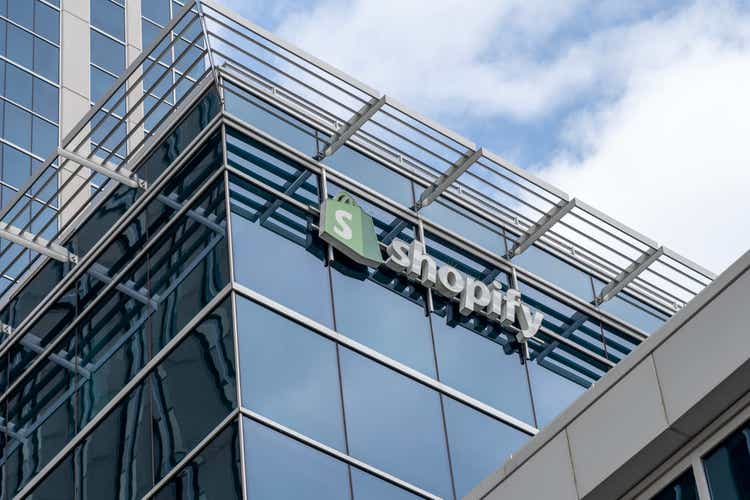[ad_1]
JHVEPhoto
Shopify (NYSE:SHOP) posted a $1.12 billion net loss for Q2. To be sure, $1 billion of that was a non-cash write-down of the company’s equity investments. However, once all of those companies go out of business, it will be an economic loss of the cash used to invest in them. But even adding that write-down back, SHOP lost $190 million on an operating basis vs. $139 million of operating income in Q2 2021.
For the 1H of 2022, SHOP posted an operating loss of $288 million vs. $258 million in operating income in 1H 2021. The surge from the pandemic in online buying died in late 2021, and now a large portion of consumers no longer have the disposable income needed to buy the stuff sold on SHOP’s platform. SHOP’s operations burned $177 million in cash in 1H 2022 vs. providing $202 million in cash in 1H 2021.
The company said that it will generate an operating loss for 2H of 2022, and it expects the Q3 operating loss to increase “materially” over the second quarter’s $190 million loss. It sounds like the operating loss in Q3 will be quite large, as management goes on to say “we expect an adjusted operating loss in the fourth quarter that is significantly smaller than in the third quarter, but larger than in the second quarter.”
About the only positive in SHOP’s earnings report is that it has roughly $5.50/share in cash and marketable securities. However, based on 2H guidance, the company likely will burn around 10% of the $6.65 billion in cash plus marketable securities.
Giving SHOP the benefit of simply doubling the 1H revenues to come up with a full-year estimate, it is trading at 9x revenues. We can’t gauge operating and net income valuation ratios because the company will be losing money, and the rate of loss will increase, for at least the next two quarters. Thus, on both a trailing four-quarter and six-month forward basis, SHOP loses money. To put the 9x revenues metric in perspective, AMZN trades at 2.9x sales, while most other retailers – all of which have big online businesses (Walmart (WMT), Target (TGT), etc.) – trade between 0.5x-0.8x sales trailing sales.
SHOP did a 10-for-1 stock split on June 29th. Pre-split, it had run up to as high as $1700 at the frenzied top of the stock bubble. It’s back down to $340 pre-split. Post-split, the all-time high was $170. The current stock price is $34 and the 5-year low is just below $12:
SHOP – 5yr Daily (Short Seller’s Journal)
Assuming SHOP does $6 billion in revenues in 2022, this gives the company the benefit of revenue growth in the 2H, though it will still lose $600-700 million on an operating loss basis. If SHOP breaks that line of support, which extends back to the March 2020 lows, I believe it could see $12 before year-end but for sure within the next 12 months.
At a share price of $12, the price/sales ratio using my 2022 estimated full-year revenues is still 2.5x. This would correct SHOP’s valuation down to Amazon’s (AMZN) level. But unlike AMZN, SHOP loses a lot of money. If it corrects down to the average P/S ratio for big retailers with online operations, the stock price will fall to $3/share (this is based on a PSR of 0.65 and $6 billion in revenues). By the time SHOP might fall to $3, its cash hoard – at $5.50/share now – will be well below $5/share. Maybe the cash on hand will prevent it from falling to $3 for a couple years.
When the market rolls back over, which I expect to happen anytime between now and Labor Day weekend, I think SHOP will fall to the $20-25 range. On that basis, I think the September 16th $30 puts are quite interesting. I may buy some of those. However, for the purposes of the valuation analysis I laid out above, I like the March 2023 $20 puts (traded at $1.75 on Friday) and the January 2024 $15’s (traded at $1.80 on Thursday) or the January 2024 $12’s (lowest strike offered, traded at $1.20 on Friday). A continued rally in the market that takes SHOP higher will help make the 2024 puts less expensive.
Editor’s Note: The summary bullets for this article were chosen by Seeking Alpha editors.
[ad_2]
Image and article originally from seekingalpha.com. Read the original article here.

